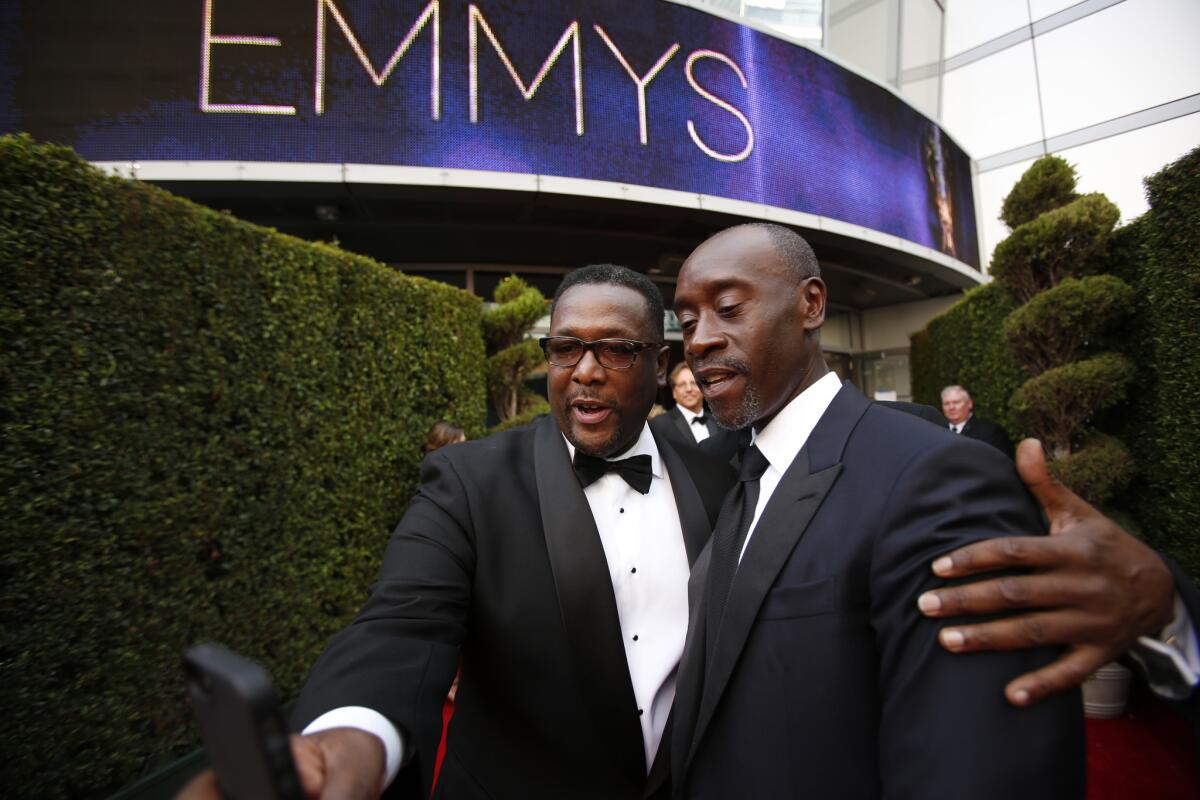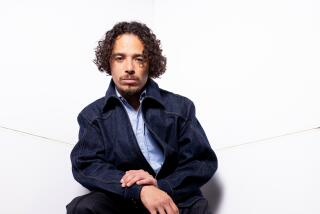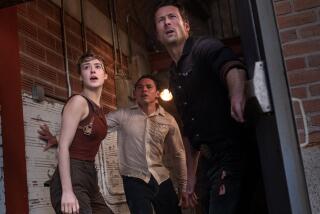Wendell Pierce on the restorative power of art, his passion for New Orleans and his new book

Wendell Pierce, left, arrives with Don Cheadle at the Emmy Awards at the Nokia Theatre on Aug. 25, 2014.
- Share via
It is no secret that art often imitates life, but for actor Wendell Pierce, life also has a way of taking on elements from art. He sees it in the way he and the community of New Orleans rebounded after Hurricane Katrina ravaged the city 10 years ago. New Orleans art, he says, whether in the form of food, the unique jazz funeral or second line brass bands, helped to restore the one-of-a-kind spirit the city is known for, something he describes in his new book, “The Wind in the Reeds: A Storm, A Play and the City That Would Not Be Broken” (Riverhead: 352 pp., $27.95).
Pierce was born and raised in the Pontchartrain Park neighborhood of New Orleans. After graduating from high school, he attended the Julliard School to study drama. Though he would intermittently make visits to the city to see family, it wasn’t until Hurricane Katrina hit that he returned to help restore his childhood neighborhood, which had been wiped out by the storm. In 2012, he started the nonprofit Pontchartrain Park Community Development Corp. to build homes in the area, and he is also part of a team that started a chain of grocery stores, Sterling Farms, in the 9th Ward.
Part memoir, part history lesson, the book takes readers through Pierce’s own connection to the city and his “role of a lifetime” in the HBO series “Treme.” He spoke by phone about his book, the power of art and the process of rebuilding his hometown.
How did Hurricane Katrina affect your life personally?
It was such a defining, pivotal moment for me when my family realized not only did we lose possessions, but we lost memories. The entire world that I knew, of my neighborhood, city and community, was destroyed in a flash. It was an epiphany for me, something that woke me up. I wanted to find out what and who and where is important to me. And when the time comes that some young kid asks, “In your family’s darkest hour, what did you do?” I wanted to have an answer.
You assert that art has played a redeeming, restorative role for those affected by the hurricane. What, for you, is art?
The whole of art itself is something lost in America. We see art as just entertainment, when entertainment is a byproduct of art, a residual. Its purpose is reflective and restorative. Art and the form of art is where we collectively reflect on where we’ve been, where we are and what are our values are, and then we act on them.
Art, for example, is jazz, the most American art form to date [created by enslaved Africans in New Orleans’ Congo Square, as discussed in the book]. This was their artistic freedom until physical freedom came. Freedom of improvisation within form itself was a reflection of their human condition. That is a tangible way that those Africans took art and made it an expression of their desired freedom that’s going to last for generations to come.
In the first chapter of the book, you speak of putting on the play “Waiting for Godot” by Samuel Beckett in a Lower 9th Ward that had yet to be rebuilt. What from that play has been reflected in the lives of those who attended?
“At this place, in this moment in time, all mankind is us. Let us do something while we have a chance.” That line [from the play] rang out. It was an awakening for everyone who was there. It was rejuvenating and there was a realization that we have to find that strength of recovery from within ourselves. The play teaches you that if you wait for something outside of yourself to change your condition, it won’t happen. We realized we were all a part of something pretty extraordinarily destructive and damaging, but we couldn’t let this moment pass without committing to community and each other.
Many know you from “The Wire,” but your role on “Treme,” which was set in New Orleans, allowed you to return to the city in the years following the hurricane. You say it was “more than a job, more than a TV show.” How so?
It brought me home during the most important years after the flood to try to help restore my community, the neighborhood and, more importantly, my family. It was an opportunity to answer that question of what I did myself in New Orleans after the city was destroyed. Those were precious days that could never be replaced. The thing that was rejuvenating was, one crawfish etouffee at a time, one second line at a time, people expressed their culture [through this show].
What does the city look like today?
The city has come back -- home prices are up, the economy is growing and there’s an influx of new business and entrepreneurial spirits -- but we can’t look at our recovery through rose-colored glasses. There are still neighborhoods where there hasn’t been political will to bring it back and there are barriers to economic development. We’re going through a battle of the haves and the have nots with a disparity in resources that haven’t been equally distributed in the city. It’s a tale of two cities, the best of times and, for many, still the worst of times.
What do you hope people take away from “The Wind in the Reeds?”
I want people to see that there is a great legacy that has come from generations prior and learn from that, how it can be empowering. I want them to see how easily a city can be destroyed in one night, but how it can be rebuilt and restored because of the resilience of its people and because of their vision and exercising their right of self-determination. I hope people see the role of art as clearly as I see it in my life and how examples of the power of art are on display in the history and legacy of my family and Louisiana and New Orleans.
More to Read
Sign up for our Book Club newsletter
Get the latest news, events and more from the Los Angeles Times Book Club, and help us get L.A. reading and talking.
You may occasionally receive promotional content from the Los Angeles Times.









